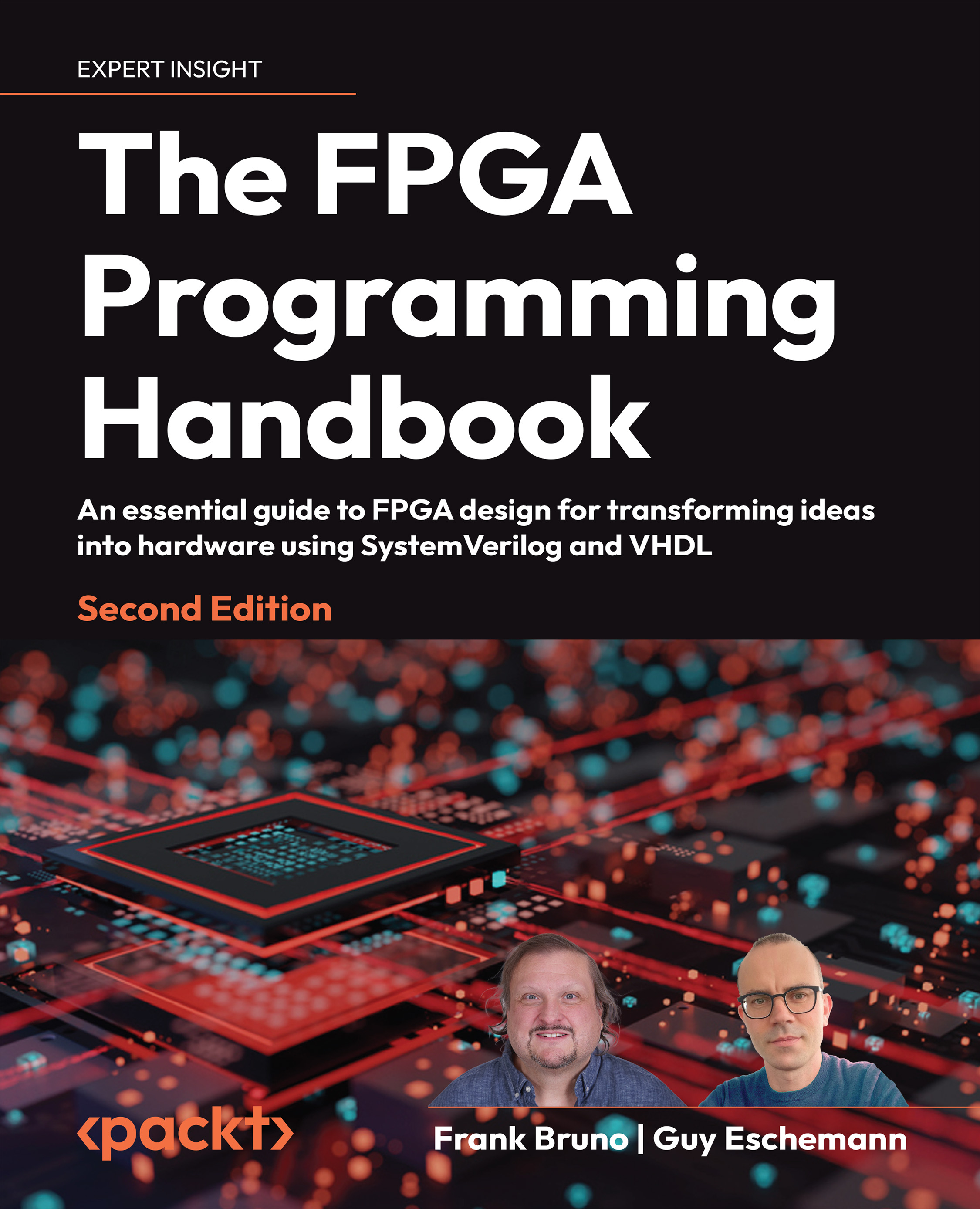Project 14 – Bringing it all together
You should take a moment to consider the path you’ve taken over the course of the book. In the beginning, you toggled some switches and lit some lights. You’ve built some simple designs, such as a calculator and a traffic light controller. You’ve captured and converted temperature sensor information, captured audio data, and displayed data on a VGA monitor.
Now, we’ll look back on these projects to gather a few of them and combine them into a final design. The base will be the VGA we created in Chapter 10, A Better Way to Display – VGA. This will allow us to easily display text or graphics. In the previous section, we simulated the PS/2. However, we haven’t seen it in operation. Luckily, every keypress generates at least 3 bytes – 1 byte for keydown and 2 bytes for keyup for most keys. We can come up with a clever way of displaying this to the screen. Finally, we can look at the audio...


























































